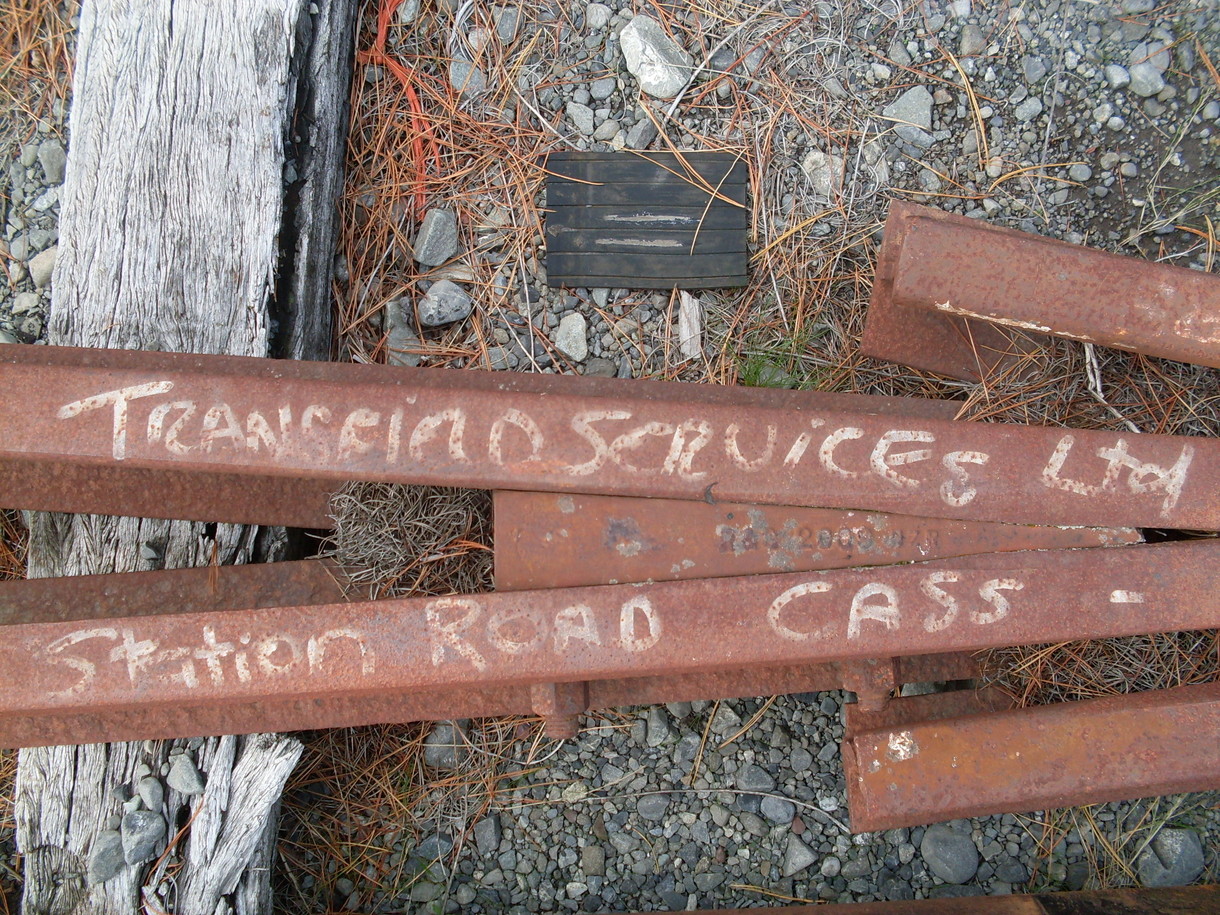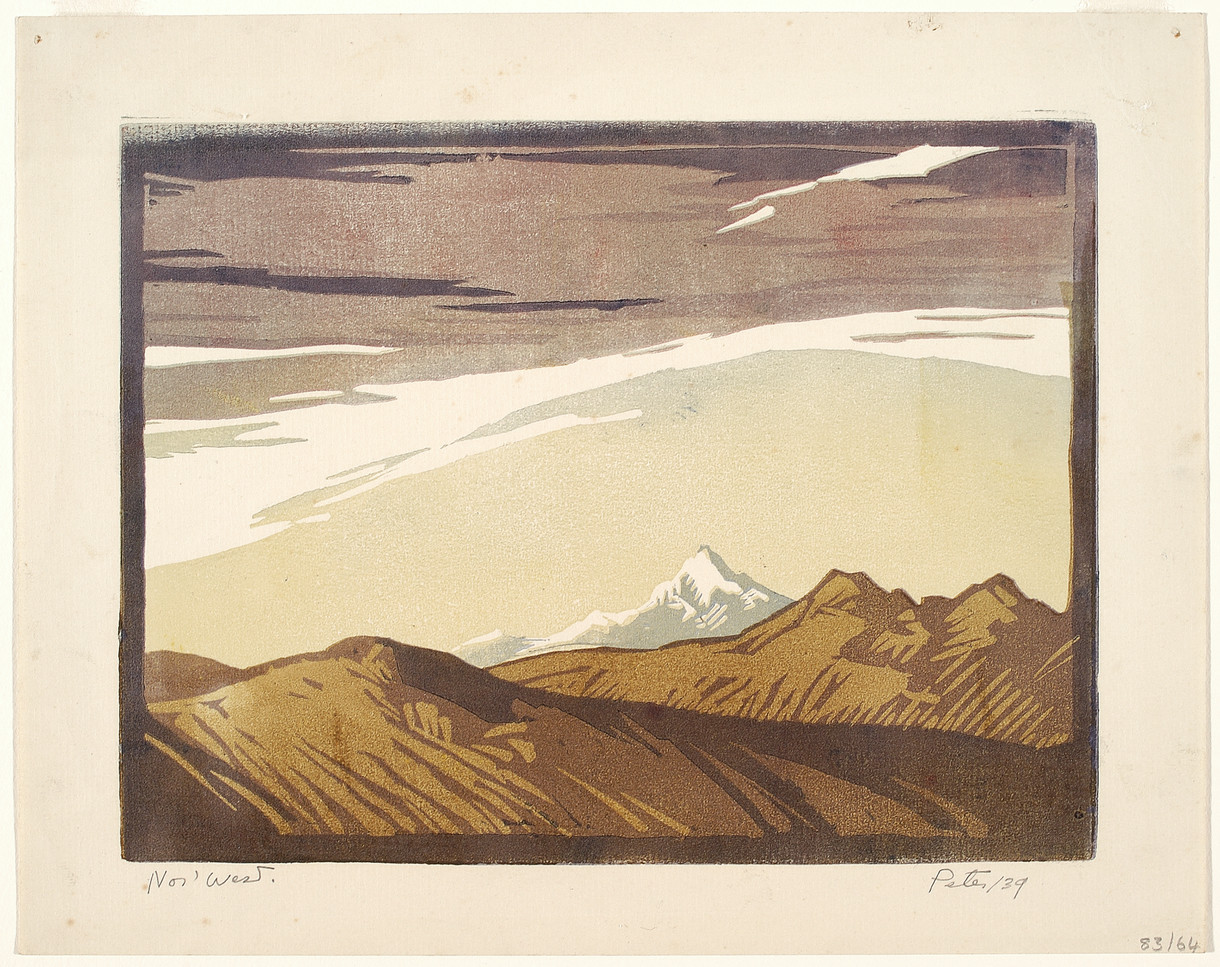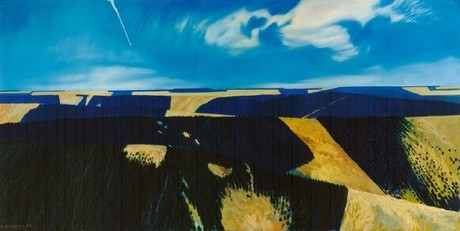B.
Mountains, Cass by Rita Angus
Collection
This article first appeared as 'The wonders of waterolours' in The Press on 11 August 2015.
Watercolours are often viewed as the poor cousins of oil paintings; and this is regularly reflected in the auction sale-rooms around New Zealand. For me, however, the watercolour medium is one full of dynamic potentials, it's a medium that can exude immediacy and movement. Combined with its portability, this has meant watercolour is often used outdoors (en plein air) by landscape painters. What I love most about watercolour as a medium is how washes of colour bleed into each other creating a translucent glowing effect when used by a skilled artist. Rita Angus certainly rates amongst one of the best watercolourists New Zealand has produced.
Angus's watercolour Mountains, Cass is overshadowed by her famous oil painting Cass; both were the result of her trip to Cass in May 1936 with fellow artists Louise Henderson and Julia Scarvell. However, Mountains, Cass is worthy of more attention than it gets. It's a contender for one of Angus's most accomplished watercolour paintings. Capturing the uniqueness of Canterbury's high country, it ticks many boxes. The derelict musterer's hut and burnt foothills are the only evidence of human intervention on the landscape. The spiky tussocks and rolling foothills extending into the vast mountain ranges at Cass completely captured Angus.
This trip had a profound and lasting effect on Angus and she often recalled fond memories her time spent at Cass. In 1944 in a letter to Douglas Lilburn she wrote of how she had "...just finished reading through a story I wrote of Cass, descriptions, have taken me back to those days of clear blue green skies, sun setting behind the dark hills, cold shadows, thin smoke from the chimney ascending in a straight line. They were happy days, I long for a return into the mountains. How little did I think then, or foresee my life these last ten years, or that Cass, would come to have any meaning for the painter." Angus's own story of Cass does not appear to have survived, but her comments certainly highlight the importance this trip had on her as an artist.
Mountains, Cass simply glows when it is in a gallery space. The paint seems as fresh today as when Angus made it almost 80 years ago. It's a work full of movement with billowing clouds and you can almost sense the tussock in the foothills being rustled this way and that by the wind through her repeated use of simplified sweeping lines. Angus herself thought Mountains, Cass was important. When she first exhibited it at the Canterbury Society of Arts Annual Exhibition in 1937, she asked 10 guineas for Mountains, Cass and only 8 guineas for the now highly-valued oil painting.
Mountains, Cass was presented to the Gallery in 1985 by Robert Erwin to mark the death of Lawrence Baigent, his life-long partner. Baigent shared studio spaces with Rita Angus and Leo Bensemann on Cambridge Terrace in 1937 just after Mountains, Cass had been painted. He and Erwin amassed a large collection of paintings by Angus, ten of which were bequeathed to the Gallery in 2003 on Erwin's death. Both Mountains, Cass and Cass will be on display when the Gallery re-opens this summer in the exhibition 'In the vast emptiness' which will put the spotlight on 20th century Canterbury landscape painting.










